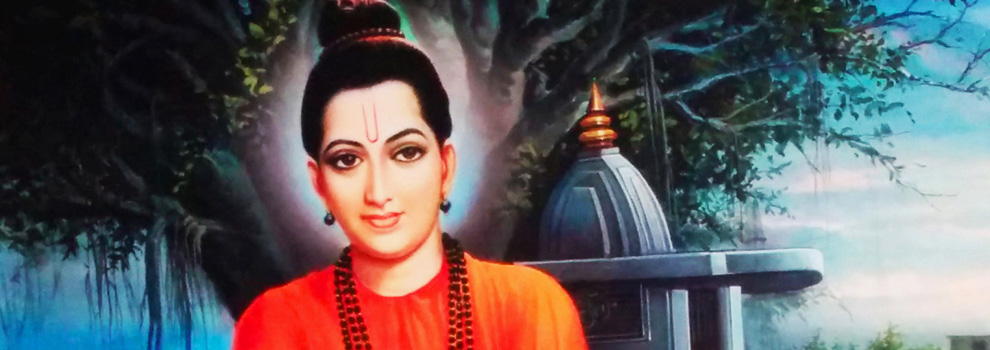Srīpāda Srīvallabha - The Female Part
“Vasavī Kanyaka is in reality My divine sister.”
- Srīpāda
Overview Incarnations Back: Srīpāda - The Mission Pithapuram Penugonda, place of incarnation of Vasavī Kanyaka Penugonda Vasavī Kanyaka temple on Google Maps
 Srīpāda explains that he has a sister called Vasavī. She is the same essence taking to a female form, and she also manifested in South India.
Srīpāda explains that he has a sister called Vasavī. She is the same essence taking to a female form, and she also manifested in South India.
Srīpāda’s biography reveals many stories about Vasavī Devi. She is the female aspect of the indwelling God, Vasudeva. Vasavī, the Universal Mother, is a virgin meaning she is the pure nature. Like Srīpāda who is a youth of sixteen years, she is described as a lady of sixteen years, meaning sixteen dimensions. The World Mother is worshipped in various forms such as Durga, or Radha in the Krishna system. In South India, Vasavī is worshipped as Kanyaka Kumari.
To safeguard her purity from an assault of a demonic incarnation, Vasavī once walked into the fire, together with a great number of couples from the Vaishya (businessmen) community. She then gave the promise that she will eternally stay with the Vaishya community and will give them her blessings as long as she is worshipped. In the towns where there is a business community in India, there is usually a temple related to Vasavī.
“Wherever Vasavī Kanyakamba’s name is remembered, there Datta will live incognito.”
- Srīpāda
Back: Srīpāda - The Mission
Sources:
- K. Parvathi Kumar: Notes from seminars. The World Teacher Trust - Dhanishta, Visakhapatnam, India worldteachertrust.org
- Shankar Bhatt: Srīpāda Srīvallabha Charitāmrutam







